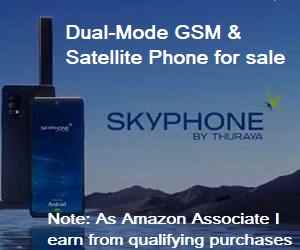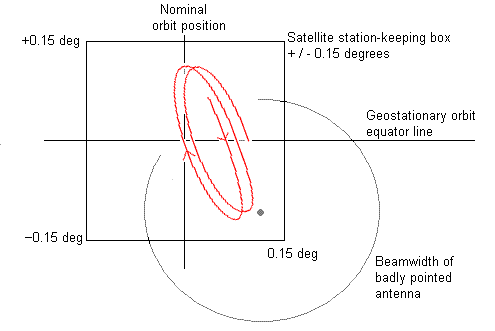Satellite Internet Forum.
Welcome, Guest. Forum rules.To search this site click here > SATSIG search
| Home Login Register |
| Satellite Internet forum › General and other topics › Help on installing Beacon Receiver and ACU |
|
Pages: 1
|
Help on installing Beacon Receiver and ACU(Read 17212 times) |
|
kenshin03
Senior Member
★★★ Offline Posts: 61 |
Jan 11th, 2011 at 2:33am
|
| Back to top |
IP Logged
|
|
Eric Johnston
Senior Member
★★★ Offline Posts: 2109 |
Reply #1 - Jan 11th, 2011 at 9:13am
|
| Back to top |
IP Logged
|
|
kenshin03
Senior Member
★★★ Offline Posts: 61 |
Reply #2 - Jan 11th, 2011 at 9:49am
|
| Back to top |
IP Logged
|
|
Eric Johnston
Senior Member
★★★ Offline Posts: 2109 |
Reply #3 - Jan 11th, 2011 at 11:27am
|
| Back to top |
« Last Edit: Jan 11th, 2011 at 3:46pm by Admin1 »
IP Logged
|
|
kenshin03
Senior Member
★★★ Offline Posts: 61 |
Reply #4 - Jan 12th, 2011 at 12:50am
|
| Back to top |
« Last Edit: Jan 12th, 2011 at 2:09am by kenshin03 »
IP Logged
|
|
USN - Retired
YaBB Moderator
★★★★★ Offline Posts: 837 Kentucky (USA) |
Reply #5 - Jan 12th, 2011 at 4:09am
|
| Back to top |
USN (Ret)
IP Logged
|
|
kenshin03
Senior Member
★★★ Offline Posts: 61 |
Reply #6 - Jan 12th, 2011 at 6:39am
|
| Back to top |
IP Logged
|
|
Eric Johnston
Senior Member
★★★ Offline Posts: 2109 |
Reply #7 - Jan 12th, 2011 at 10:49am
|
| Back to top |
IP Logged
|
|
kenshin03
Senior Member
★★★ Offline Posts: 61 |
Reply #8 - Jan 13th, 2011 at 12:49am
|
| Back to top |
IP Logged
|
|
kenshin03
Senior Member
★★★ Offline Posts: 61 |
Reply #9 - Jan 21st, 2011 at 5:16am
|
| Back to top |
IP Logged
|
|
Eric Johnston
Senior Member
★★★ Offline Posts: 2109 |
Reply #10 - Jan 21st, 2011 at 10:57am
|
| Back to top |
« Last Edit: Jan 21st, 2011 at 1:24pm by Eric Johnston »
IP Logged
|
|
kenshin03
Senior Member
★★★ Offline Posts: 61 |
Reply #11 - Jan 21st, 2011 at 11:23pm
|
| Back to top |
IP Logged
|
|
Eric Johnston
Senior Member
★★★ Offline Posts: 2109 |
Reply #12 - Jan 22nd, 2011 at 8:38am
|
| Back to top |
« Last Edit: Jan 23rd, 2011 at 3:11pm by Admin1 »
IP Logged
|
|
kenshin03
Senior Member
★★★ Offline Posts: 61 |
Reply #13 - Apr 11th, 2011 at 7:31am
|
| Back to top |
IP Logged
|
|
Oasis Networks
Senior Member
★★★ Offline Posts: 232 |
Reply #14 - Apr 11th, 2011 at 12:31pm
|
| Back to top |
www.oasisnetworks.net - Oasis Networks - Online with you!
IP Logged
|
|
kenshin03
Senior Member
★★★ Offline Posts: 61 |
Reply #15 - Apr 11th, 2011 at 3:36pm
|
| Back to top |
IP Logged
|
|
Eric Johnston
Senior Member
★★★ Offline Posts: 2109 |
Reply #16 - Apr 11th, 2011 at 6:20pm
|
| Back to top |
« Last Edit: Apr 11th, 2011 at 7:34pm by Eric Johnston »
IP Logged
|
|
kenshin03
Senior Member
★★★ Offline Posts: 61 |
Reply #17 - Apr 12th, 2011 at 1:15am
|
| Back to top |
IP Logged
|
|
Eric Johnston
Senior Member
★★★ Offline Posts: 2109 |
Reply #18 - Apr 12th, 2011 at 9:35am
|
| Back to top |
IP Logged
|
|
kenshin03
Senior Member
★★★ Offline Posts: 61 |
Reply #19 - May 9th, 2011 at 8:30am
|
| Back to top |
IP Logged
|
|
USN - Retired
YaBB Moderator
★★★★★ Offline Posts: 837 Kentucky (USA) |
Reply #20 - May 9th, 2011 at 10:51am
|
| Back to top |
USN (Ret)
IP Logged
|
|
kenshin03
Senior Member
★★★ Offline Posts: 61 |
Reply #21 - May 9th, 2011 at 11:11am
|
| Back to top |
IP Logged
|
|
Jurehb
Member
★★ Offline Posts: 1 |
Reply #22 - Jul 18th, 2022 at 9:35am
|
| Back to top |
IP Logged
|
|
Nimrod Kapon
Member
★★ Offline Posts: 27 |
Reply #23 - Jul 18th, 2022 at 3:56pm
|
| Back to top |
www.oasisnetworks.net
We are your boots on the ground!
IP Logged
|
|
Admin1
YaBB Admin
★★★★★ Offline Posts: 1257 |
Reply #24 - Jul 20th, 2022 at 5:55pm
|
| Back to top |
« Last Edit: Jul 21st, 2022 at 2:11am by Admin1 »
IP Logged
|
|
Pages: 1
|
Email me: eric@satsig.net
Powered by YaBB 2.5.2!
YaBB Forum Software © 2000-. All Rights Reserved.
Disclaimer, Terms of Use and Privacy Forum User Agreement Forum rules Cookie policy.



